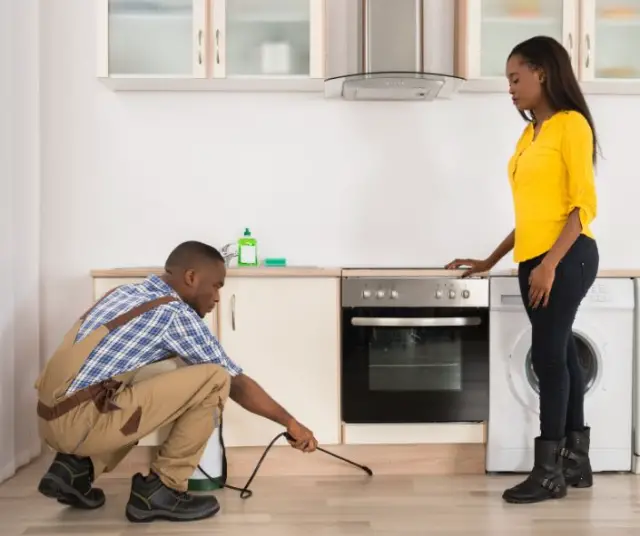Insect pests can be a constant nuisance in our homes and gardens. Often, turning to commercial insecticides may seem like the simplest solution, but many of these products contain toxic chemicals that can be harmful to human health, pets, and the environment. Fortunately, there are safe and effective alternatives in the form of homemade insecticides that you can easily prepare with common ingredients you have at home.
Understanding Pest Control
Pest control is a crucial aspect of health and hygiene management in both domestic and agricultural environments. Before we delve into homemade insecticide recipes and methods, it is essential to understand some fundamental concepts that form the basis of any effective pest control strategy.
1. Pest identification
The first step in pest management is the accurate identification of the pests involved. This is critical because different insects and organisms may require completely different control approaches. Not all pests are equally harmful or require the same attention. Accurate identification allows homeowners and farmers to determine the most appropriate strategies to address the problem at hand.
Identifying pests involves carefully examining the physical characteristics and behaviors of the insects or animals, such as their shape, size, color, movement patterns, and life cycle. In many cases, it may require the support of experts in entomology or biology for accurate identification.
2. Integrated approach
The most effective and sustainable pest control relies on what is known as an "integrated approach." This approach recognizes that the exclusive use of chemicals, such as insecticides, is not the most appropriate or environmentally friendly solution. Instead, integrated pest management seeks to combine several methods to effectively address the problem and minimize collateral damage.
The pillars of the integrated approach include:
to. Prevention:
Implementing preventative measures to prevent pests from entering or reproducing in an area in the first place. This may include practices such as sealing cracks and gaps in buildings, eliminating food and water sources, and proper waste management.
b. Cultural:
Agricultural and gardening practices that promote a less attractive environment for pests. This may include crop rotation, selecting pest-resistant plants, and eliminating pest harborages.
c. Biological:
Use of natural enemies of pests to control their population. For example, the introduction of predatory insects that feed on pests or the release of beneficial bacteria.
d. Chemical:
Selective and careful use of insecticides or chemicals when necessary. This approach involves consideration of less toxic chemicals and precise application to minimize the impact on the environment and human health.
3. Safety and precautions
When working with insecticides, whether commercial or homemade, it is imperative to take precautions to ensure safety. Insecticides, for the most part, contain chemicals that can be harmful to humans, pets and wildlife, as well as having a negative impact on the environment.
Some key precautions include:
- Wear gloves and protective clothing when mixing and applying insecticides.
- Avoid direct contact with skin and eyes.
- Store insecticides in appropriate containers and out of the reach of children and pets.
- Carefully follow the product instructions.
- Avoid excessive use of chemicals, as this can increase the risk of contamination and pest resistance.
- Dispose of insecticide containers responsibly following local hazardous chemical disposal regulations.
Homemade Insecticide Recipes
1. Insecticide Soap Insecticide
Ingredients:
- 1 tablespoon liquid dish soap
- 1 liter of water
Instructions:
Mix the liquid soap with water in a spray bottle and shake well. Spray directly on pests, such as aphids or mites, and be sure to cover affected areas. Soap breaks down the protective layer of pests, making them more vulnerable.
2. Neem Oil Insecticide
Ingredients:
- 1 tablespoon neem oil
- 1 liter of water
- 1 teaspoon liquid dish soap
Instructions:
Mix neem oil, water, and soap in a spray bottle and shake well. This insecticide is effective against a wide variety of pests and also acts as a repellent.
3. Garlic and hot pepper insecticide
Ingredients:
- 4 cloves of garlic
- 2 dried red chilies
- 2 cups of water
Instructions:
Crush the garlic cloves and dried red chillies and mix them with the water. Let it sit overnight. Then, strain the mixture and add a teaspoon of liquid dish soap. Spray this solution on the pests.
Prevention and Cultural Control
In addition to using homemade insecticides, there are preventive and cultural measures you can take to reduce the presence of pests in your home or garden.
Keep your space clean
Maintaining a clean and tidy environment can help prevent the entry and reproduction of pests. Wash dirty dishes, remove trash, and don't leave food out in the kitchen.
Prune and remove shelters
Trim plants and bushes near your home to eliminate potential harborages for pests. Also be sure to seal any cracks or holes they could use to enter your home.
Crop rotation
In the garden, practice crop rotation to prevent pests from accumulating in a specific area. Changing the location of your crops each season can help reduce pest pressure.
Common Pests and Solutions
Below, we'll outline some common pests and specific solutions you can use.
- Aphids: Aphids can damage plants and crops. Use the soap or neem oil insecticide mentioned above to remove them.
- Mosquitoes: To repel mosquitoes in the garden, plant herbs such as citronella and basil. You can also use citronella candles.
- Cockroaches: Cockroaches are a nuisance in the home. Set roach traps and seal cracks and openings in walls.
Using homemade insecticides can be a safe and effective way to control pests in your home and garden without resorting to harmful chemicals. By combining these recipes with preventative and cultural measures, you can keep pests at bay and promote a healthier, more environmentally friendly environment. Remember that patience and consistency are key when fighting pests, and an integrated approach is often necessary to achieve the best results. Keep your space free of pests naturally and enjoy a cleaner, healthier environment!
